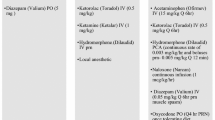Abstract
Background: Currently, few data exist regarding the relative costs associated with open and minimally invasive pectus excavatum repair. The aim of this study was to compare the surgical and hospitalization costs for these two surgical techniques and to identify factors responsible for cost differences. Methods: A retrospective review of hospital charts, patient and parent questionnaires, and hospital accounting records was performed for 68 patients who underwent surgical correction of pectus excavatum between June 1996 and December 1999. Results: In this series, 25 patients underwent open repair, whereas 43 patients underwent minimally invasive repair of pectus excavatum (MIRPE). The patient ages ranged from 4 to 19 years. The average ages for open repair (12 years) and MIRPE (11 years) did not differ significantly. As compared with open repair, MIRPE was associated with a 27% lower overall cost of hospitalization (p < 0.05). The operating room costs were 12% higher for the patients who underwent MIRPE (p < 0.05). The mean operative time for open repair was 3 h 15 min, whereas MIRPE required 1 h 10 min (p < 0.001). The hospital stay for open repair averaged 4.4 days, as compared with 2.4 days for MIRPE (p < 0.001). In contrast to other published series, the postoperative analgesia after MIRPE in this series consisted of narcotics, ketorolac, and methocarbamol. No patient received epidural analgesia, regardless of the repair technique selected. The postoperative complication rate was 4% in the open group and 14% in the MIRPE group. Most of the patients treated with either open or MIRPE reported postoperative oral narcotic usage for 2 weeks or less and returned to routine activities within 3 weeks. The patients and parents alike reported good to excellent overall outcomes in 85% or more of the open repair cases and 90% or more of the MIRPE cases. Conclusions: These data demonstrate for the first time that the use of an alternate pain management strategy including, narcotics, NSAIDs, and methocarbamol, but without epidural catheters, results in reduced hospital length of stay and decreased overall hospitalization costs for MIRPE, as compared with open pectus repair. This cost benefit was achieved without compromising pain management or patient satisfaction with surgical care.
Similar content being viewed by others
References
DP Croitoru RE Kelly Jr MJ Goretsky ML Lawson B Swoveland D Nuss (2002) ArticleTitleExperience and modification update for the minimally invasive Nuss technique for pectus excavatum repair in 303 patients. J Pediatr Surg 37 437–445 Occurrence Handle10.1053/jpsu.2002.30851 Occurrence Handle11877663
EW Fonkalsrud S Beanes A Hebra et al. (2002) ArticleTitleComparison of minimally invasive and modified Ravitch pectus excavatum repair. J Pediatr Surg 37 413–417 Occurrence Handle10.1053/jpsu.2002.30852 Occurrence Handle11877659
A Hebra B Swoveland M Egbert et al. (2000) ArticleTitleOutcome analysis of minimally invasive repair of pectus excavatum: review of 251 cases. J Pediatr Surg 35 252–257
InstitutionalAuthorName. (2002) Methocarbamol L Murray (Eds) Physician’s Desk Reference. Medical Economics Company Montvale 2938–2939
RS Middleton (1984) ArticleTitleA comparison of two analgesic muscle relaxant combinations in acute back pain. Br J Clin Pract 38 107–109 Occurrence Handle1:STN:280:BiuC2sfptVc%3D Occurrence Handle6231940
KA Miller RK Woods RJ Sharp et al. (2001) ArticleTitleMinimally invasive repair of pectus excavatum: a single institution’s experience. Surgery 130 652–657 Occurrence Handle10.1067/msy.2001.116917 Occurrence Handle1:STN:280:DC%2BD3Mrls1Whuw%3D%3D Occurrence Handle11602896
KA Molik SA Engum FJ Rescorla et al. (2001) ArticleTitlePectus excavatum repair: experience with standard and minimal invasive techniques. J Pediatr Surg 36 324–328 Occurrence Handle10.1053/jpsu.2001.20707 Occurrence Handle1:STN:280:DC%2BD3MzjslGmsg%3D%3D Occurrence Handle11172426
D Nuss RE Kelly Jr DP Croitoru et al. (1998) ArticleTitleA 10-year review of a minimally invasive technique for the correction of pectus excavatum. J Pediatr Surg 33 545–552 Occurrence Handle1:STN:280:DyaK1c3jtl2gtA%3D%3D Occurrence Handle9574749
MM Ravitch (1949) ArticleTitleThe operative treatment of pectus excavatum. Ann Surg 129 429–444
MM Ravitch (1977) ArticleTitleCongenital deformities of the chest wall and their operative correction. . Occurrence Handle0381.35039
CA Sannerud NA Ator RR Griffiths (1991) ArticleTitleMethocarbamol: evaluation of reinforcing and discriminative stimulus effects. Behav Pharmacol 2 143–150 Occurrence Handle11224058
MS Schneider (1997) ArticleTitlePain reduction in breast augmentation using methocarbamol. Aesth Plast Surg 21 23–24 Occurrence Handle10.1007/s002669900076 Occurrence Handle1:STN:280:ByiA2cfgvFI%3D
RC Shamberger KJ Welch (1988) ArticleTitleSurgical repair of pectus excavatum. J Pediatr Surg 23 615–622 Occurrence Handle1:STN:280:BiaD1c%2FpsVM%3D Occurrence Handle3204460
EJ Valtonen (1975) ArticleTitleA double-blind trial of methocarbamol versus placebo in painful muscle spasm. Curr Med Res Opin 3 382–385 Occurrence Handle1:STN:280:CSmD2c3pvFY%3D Occurrence Handle1102260
Author information
Authors and Affiliations
Corresponding author
Rights and permissions
About this article
Cite this article
Inge, T., Owings, E., Blewett, C. et al. Reduced hospitalization cost for patients with pectus excavatum treated using minimally invasive surgery . Surg Endosc 17, 1609–1613 (2003). https://doi.org/10.1007/s00464-002-8767-0
Received:
Accepted:
Published:
Issue Date:
DOI: https://doi.org/10.1007/s00464-002-8767-0




